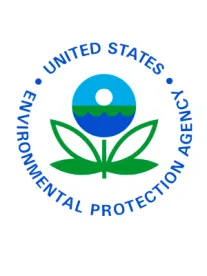On April 6, 2015, EPA published a long-awaited Proposed Rule imposing one-time electronic reporting and recordkeeping requirements on manufacturers and processors of certain nanoscale materials under Section 8(a) of the Toxic Substances Control Act (TSCA). The Proposed Rule is meant to provide EPA with data to evaluate whether to further regulate nanoscale materials. Until now, nanoscale versions of substances already on the TSCA Inventory have been exempt from reporting requirements.
Does the Proposed Rule Apply to You?
EPA proposes to impose new requirements on manufacturers and processors of chemical substances containing primary particles that range from 1-100 nanometers and exhibit unique characteristics due to their size. A manufacturer is defined under TSCA to include the initial producer as well as an importer of a chemical substance, and the processor is the user of such substance.
Suggested Actions If You Are Subject to the Proposed Rule
1. Assess whether you are manufacturing or processing multiple forms of nanoscale material.
Manufacturers and processors must separately report each nanoscale form of the same chemical substance if either (1) the change in the nanoscale form is due to all of the following: (a) a different process intended to change the size and/or or properties of a new nanoscale form; (b) the mean particle size of the new nanoscale form is 10% or greater than the original substance; and (c) the measured change in either zeta potential, specific surface area, dispersion stability, or surface reactivity of the new nanoscale form is greater than seven times the standard deviation of the measured values; (2) the new form has a different morphology (shape); or (3) the new nanoscale form is coated with a different chemical substance at the end of manufacturing or processing.
2. Assess whether you have the information required.
Manufacturers and processors should be able to produce the specific chemical identity, production volume, methods of manufacturing and processing, use, exposure and release information, and available health and safety data of the nanoscale material subject to the Proposed Rule.
3. Assess whether proprietary information is included in the information you must submit.
To keep proprietary information confidential, you must explain why it is proprietary and follow specific procedures, including clearly marking the information as confidential and sending to EPA by mail, not electronically. More information on claiming confidential business information can be found here on EPA’s website.
When Will You Have to Comply with the Rule?
Under the Proposed Rule, those manufacturing or processing a reportable nanoscale material during the three years before the rule’s effective date must report to EPA within six months of the effective date. EPA also proposes to require those intending to manufacture or process a reportable nanoscale material to report to EPA at least 135 days before commencing such actions.
Are You Exempt from the Proposed Rule?
A company handling a nanoscale material is no longer subject to the requirements in the Proposed Rule once the nanoscale material is contained in an “article.” An article is something that has a specific shape and an end-use that is dependent on that shape and does not include anything that is intended to be removed or that has a commercial purpose separate from the article. For example, a car with all of its components is an article but the ink in a pen is not; or, more relevant here, a carbon nanotube (CNT) in a polymer matrix would likely be an article if the polymer was the finished product and was not going to be further processed and the CNT was not intended to be removed. In contrast, if the nanomaterial is manufactured solely as a component of a mixture, encapsulated material, or composite, none of which qualify as an article, such mixture, encapsulated material or composite would have to be reported.
Even if you manufacture or process nanoscale forms of chemical substances, you would be exempted if your company’s yearly sales are less than $4M; if the substance is used in small quantities only for R&D; or if you’ve already submitted a TSCA chemical notice after January 1, 2005 or submitted a report as part of the Nanoscale Materials Stewardship Program. The proposed rule also exempts:
- Substances identified solely as an impurity or byproduct;
- Substances manufactured or processed in small quantities solely for R&D;
- Any food, food additive, drug, cosmetic, medical device or pesticide;
- Certain biological materials such as DNA, RNA, and proteins;
- Chemical substances that dissociate completely in water to form ions of less than 1 nanometer; and
- Zinc oxide, nanoclays, and chemical substances manufactured at the nanoscale as part of a film on a surface.
Should You Submit Comments on the Proposed Rule?
EPA asks for comments on all aspects of the Proposed Rule but specifically seeks comments on:
- The identification of chemical substances subject to reporting;
- EPA’s approach to best distinguish between nanoscale forms of a reportable chemical substance;
- Whether 135 days is the correct time period to require reporting before commencing manufacturing or processing;
- Whether EPA correctly evaluated the potential costs of the Proposed Rule;
- The logistics of electronic reporting; and
- Whether EPA should require continued reporting every four years under the Chemical Data Reporting rule.
The entire Proposed Rule is subject to change, so those affected should comment both on what they support in the Proposed Rule and what they want changed. More information on how to comment can be found here on EPA’s website. EPA has also promised to hold a public meeting during the 90-day comment period, which began on April 6. That meeting will be held in Washington D.C., likely sometime in June with an option to participate by phone or electronically.
This post was written with contributions from Jo Anne Shatkin.




 />i
/>i

